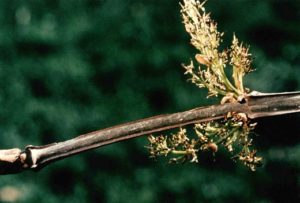By Dan Buckler, DNR urban forestry assessment outreach specialist, Madison, Daniel.Buckler@wisconsin.gov, 608-445-4578
It is no secret that th e emerald ash borer (EAB) has a voracious appetite. This pest has eradicated unprotected green and white ash in many communities in southern Wisconsin and can be expected to eventually impact all communities in the state. EAB is also damaging wetland and riverine forests by eliminating green and black ash from these woodlands, which had already become less diverse and resilient from the loss of American elm from Dutch elm disease.
e emerald ash borer (EAB) has a voracious appetite. This pest has eradicated unprotected green and white ash in many communities in southern Wisconsin and can be expected to eventually impact all communities in the state. EAB is also damaging wetland and riverine forests by eliminating green and black ash from these woodlands, which had already become less diverse and resilient from the loss of American elm from Dutch elm disease.
While EAB can feed on all American ash species so far tested, some are less favored than others and thus take less damage from the pest. Reduced feeding pressure may allow such species to persist in the presence of EAB. Blue ash (Fraxinus quadrangulata) is one of these less preferred hosts of EAB. This tree, a native of the Midwest and South, enjoys calcareous soils and has been found growing naturally in southeast Wisconsin. Even before EAB, it was considered a Threatened plant in the state, though it is common in states to the south of us. It’s an unusual tree but some communities and individuals have planted blue ash across the state.
We would like to follow these blue ash to see how they respond to weather conditions north of their traditional range and also if they can persist in areas where EAB is established, even without protection from insecticide. This is where community foresters and arborists come in. If you know of blue ashes in your community, please let us know! You can reach out to DNRUrbanForestryAssessment@wisconsin.gov. Please tell us where the tree is located (address in village, city or township), if the tree had been treated in the past, and in what condition the tree is currently in, including if there is evidence of EAB. As we learn more about this unusual ash, we will share our findings with you.
